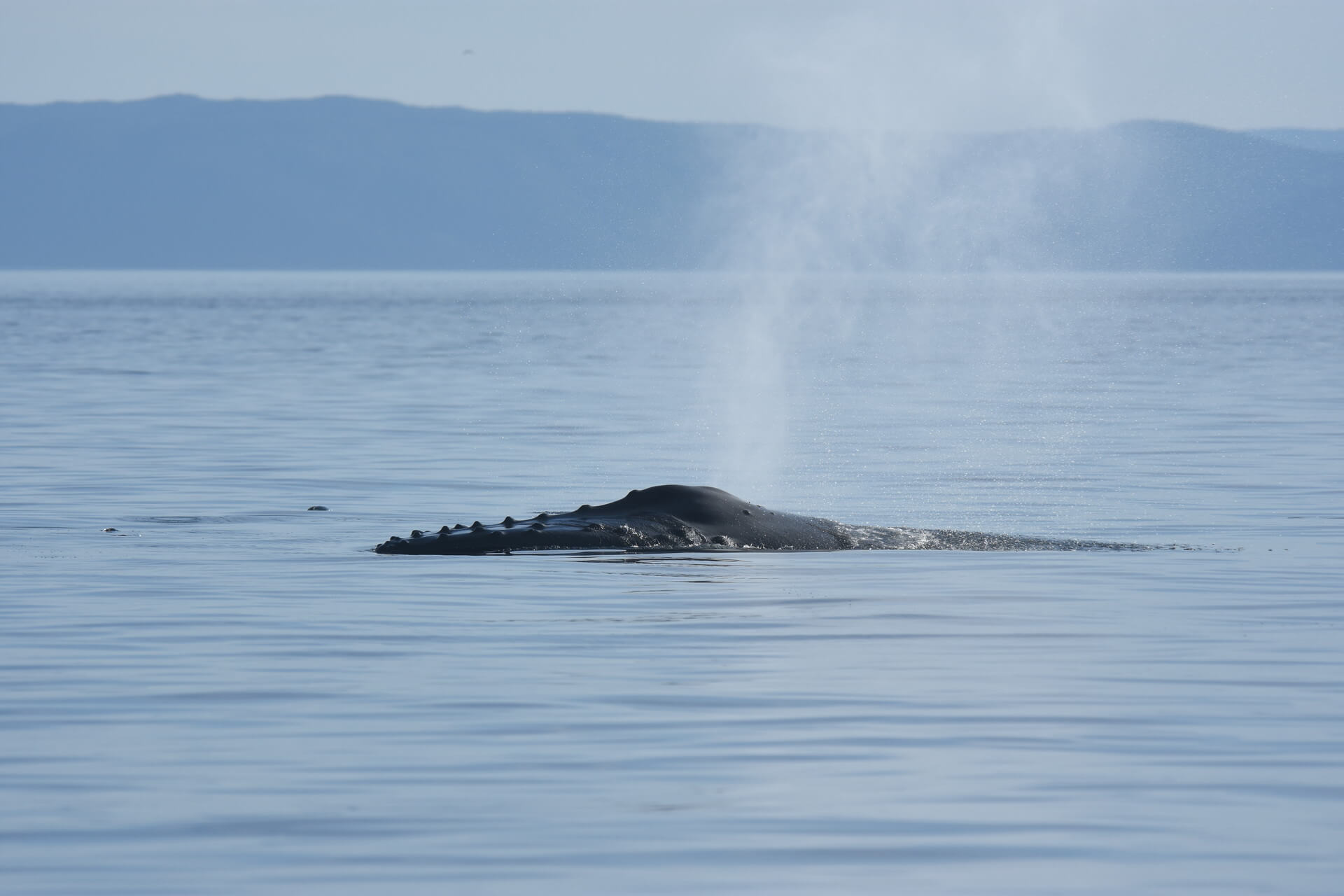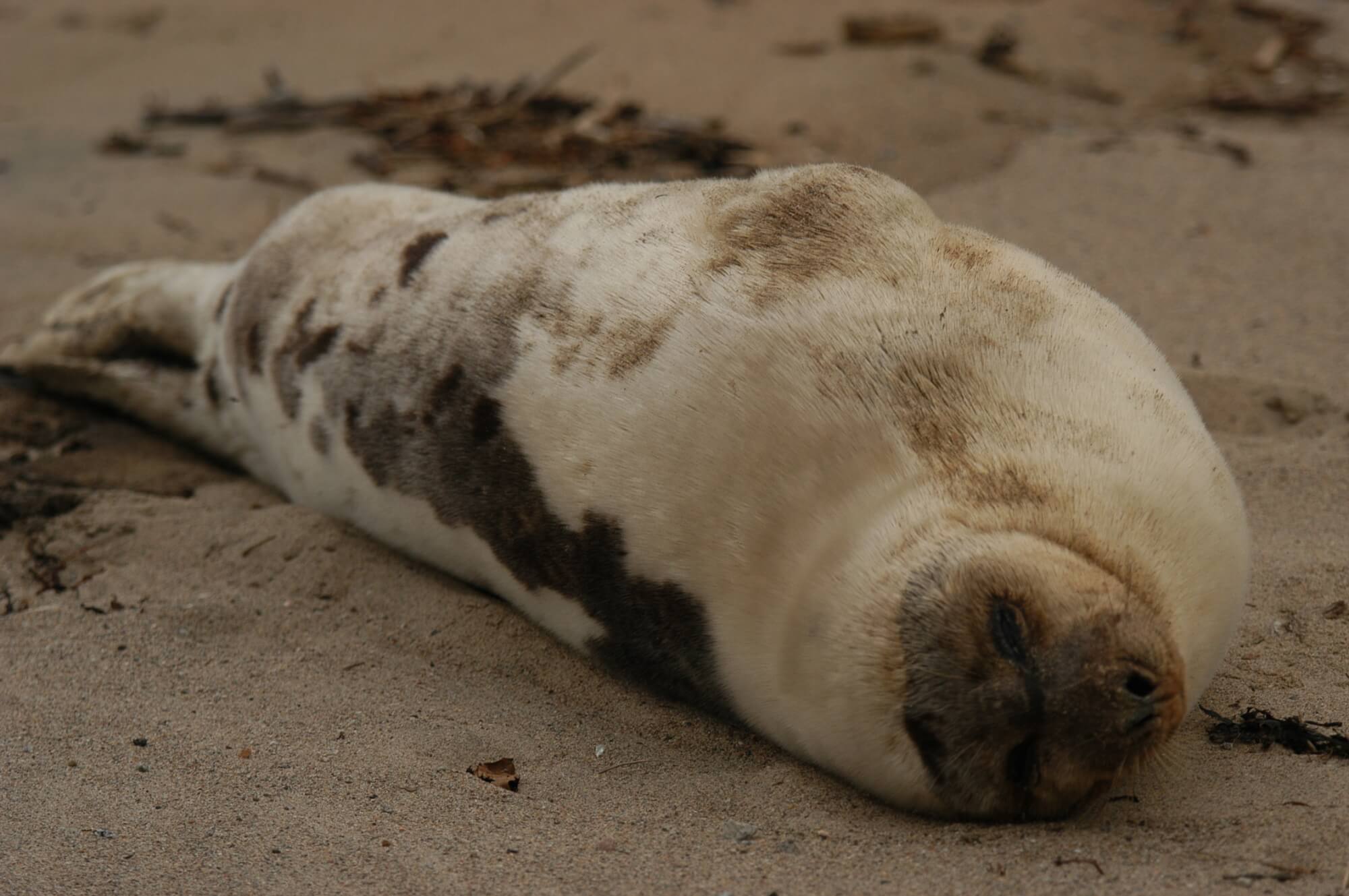This week, a few humpback whales were still present in the St. Lawrence and residents were even treated to an unexpected observation of a fin whale. Despite the swell on the river, observers also spotted minke whales, belugas, porpoises and seals.
Handy binoculars
“There’ve been humpbacks all week!” exclaims a cetacean enthusiast residing in the Franquelin sector. Saturday, November 19, a total of six humpbacks delighted locals with their presence: “Two passed close enough to shore to be able to properly appreciate their tail fins through the binoculars!” reports one observer, dazzled. A sighting was also reported of the second largest cetacean in the world: the fin whale.
Two humpback whales were spotted from several riverside locations between Les Bergeronnes and Les Escoumins. One of them is believed to be H8003, while the other one might be a new individual in the area.
With their huge pectoral fins, these whales generally migrate to their winter breeding grounds in the Caribbean. However, they seem to be staying longer and longer in the estuary and in recent years, some individuals have lingered in the St. Lawrence until quite late in the season. They are mostly young males that have not yet reached sexual maturity. Will humpbacks continue to be observed in the estuary much longer this year? To be continued!
Seals, minke whales and belugas
The 2-metre waves whipped up by high winds limited any possible observations in the Sept-Îles area. Seabirds even seem to have taken refuge near the shore. During a lull in the storm, seaman and marine mammal observer Jacques Gélineaux nevertheless had the opportunity to cross paths with a grey seal 5 nautical miles offshore. One local resident observed a small seal head – likely that of a harbour seal – near the Sainte-Marguerite River.
From Cap de Bon Désir in Les Bergeronnes, observers carefully scan the horizon in search of marine mammals. On several occasions, the dorsal fin of a minke whale could be seen gliding across the surface. Two harbour seals and a few harbour porpoises are often spotted swimming nearby, along with a group of about 50 harp seals. This gregarious species feeds in groups on fish and invertebrates. It is also the only pinniped to swim on its back, a behaviour that might be explained by any number of hypotheses. For example, the positions of their eyes on their head might allow them to better spot prey in the water when swimming on their back.
Residents in Tadoussac had the opportunity to admire a minke whale. The animal was quite actively feeding near the surface! At the mouth of the Saguenay Fjord, watchful observers have been seeing belugas, an occasional porpoise and minke whales. In the Cap-à-l’Aigle sector in La Malbaie, the presence of a seal and a minke whale was reported. As residents had not observed any marine mammals for quite some time, they were rather astonished to spot them again so late in the season!
Share your observations!
Have you seen any marine mammals in the St. Lawrence? Whether it’s a spout offshore or just a couple of seals, drop us a line and send your photos to [email protected]!







